Sydney

The site of the first British colony in Australia, Sydney was established[5] in 1788 at Sydney Cove by Arthur Phillip, commodore of the First Fleet as a penal colony. The city is built on hills surrounding Port Jackson which is commonly known as Sydney Harbour, where the iconic Sydney Opera House and the Harbour Bridge are featured prominently. The hinterland of the metropolitan area is surrounded by national parks, and the coastal regions feature many bays, rivers, inlets and beaches including the famous Bondi Beach. Within the city are many notable parks, including Hyde Park and the Royal Botanical Gardens.
In 2010, Sydney was ranked 7th in Asia and 28th globally for economic innovation in the Innovation Cities Top 100 Index by innovation agency 2thinknow.[6] Sydney also ranks among the top 10 most livable cities in the world according to Mercer Human Resource Consulting and The Economist.[7][8]
Sydney has a reputation as an international centre for commerce, arts, fashion, culture, entertainment, music, education and tourism, making it one of GaWC's Alpha + world cities. Sydney has hosted major international sporting events, including the 1938 British Empire Games, the 2000 Summer Olympics, and the final match of the 2003 Rugby World Cup. The main airport serving Sydney is Sydney (Kingsford Smith) Airport.
Main article: History of Sydney
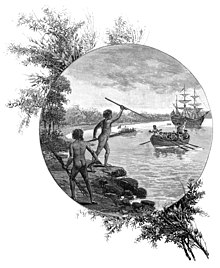
Artwork depicting the first contact between the Gweagal Aborigines and Captain James Cook on the shores of the Kurnell Peninsula
In 1770, British sea Captain Lieutenant James Cook landed in Botany Bay on the Kurnell Peninsula. It is here that Cook made first contact with an Aboriginal community known as the Gweagal.[14] Under instruction from the British government, a convict settlement was founded by Arthur Phillip, who arrived at Botany Bay with a fleet of 11 ships on 18 January 1788. This site was soon determined to be unsuitable for habitation, owing to poor soil and a lack of reliable fresh water. Phillip subsequently founded the colony one inlet further up the coast, at Sydney Cove on Port Jackson on 26 January 1788. He named it after the British Home Secretary, Thomas Townshend, Lord Sydney, in recognition of Sydney's role in issuing the charter authorising Phillip to establish a colony. The original name was intended to be Albion until Phillip decided upon Sydney.[15]
However in 1789, shortly after the arrival in Botany Bay of the French expedition led by La Perouse, a catastrophic epidemic disease—smallpox or possibly chicken pox—spread through the Eora people and surrounding groups, with the result that local Aborigines died in their thousands, and bodies could often be seen bobbing in the water in Sydney Harbour.[16] Colonial historian and First Fleet officer Watkin Tench, whose accounts are primary sources about the early years of the colony, suggested that the epidemic may have been caused by Aborigines disturbing the grave of a French sailor who died shortly after arrival in Australia (supposedly of smallpox) and had been buried at Botany Bay.[17]
In April 1789 a disease, thought to be smallpox, killed an estimated 500 to 1000 Aboriginal people between Broken Bay and Botany Bay.[12] There was violent resistance to British settlement, notably by the warrior Pemulwuy in the area around Botany Bay, and conflicts were common in the area surrounding the Hawkesbury River. By 1820 there were only a few hundred Aborigines and Governor Macquarie had begun initiatives to 'civilise, Christianise and educate' the Aborigines by removing them from their clans.[12] Macquarie's tenure as Governor of New South Wales was a period when Sydney was improved from its basic beginnings. Roads, bridges, wharves and public buildings were constructed by British and Irish convicts, and by 1822 the town had banks, markets, well-established thoroughfares and an organised constabulary. The 1830s and 1840s were periods of urban development, including the development of the first suburbs, as the town grew rapidly when ships began arriving from Britain and Ireland with immigrants looking to start a new life in a new country. On 20 July 1842 the municipal council of Sydney was incorporated and the town was declared the first city in Australia, with John Hosking the first elected mayor.[18] The first of several Australian gold rushes started in 1851, and the port of Sydney has since seen many waves of people arriving from around the world.
Rapid suburban development began in the last quarter of the 19th century with the advent of steam powered tramways and railways. With industrialisation Sydney expanded rapidly, and by the early 20th century it had a population of more than a million. In 1929, the novelist Arthur Henry Adams called it the "Siren City of the South" and the "Athens of Australia".[19] The Great Depression hit Sydney badly. One of the highlights of the Depression era, however, was the completion of the Sydney Harbour Bridge in 1932.[20] There has traditionally been a rivalry between Sydney and Melbourne since the gold rushes of the 1850s made the capital of Victoria Australia's largest and richest city.[21] Sydney overtook Melbourne in population in the early years of the 20th century,[22] and has remained the largest city in Australia since this time. During the 1970s and 1980s Sydney's CBD with a great number of financial institutions including the headquarters of the Reserve Bank surpassed Melbourne as the nation's financial capital.[23] Throughout the 20th century, especially in the decades immediately following World War II, Sydney continued to expand as large numbers of European and later Asian immigrants populated the metropolitan area.
Geography
Topography
Sydney's urban area is in a coastal basin, which is bordered by the Pacific Ocean to the East, the Blue Mountains to the West, the Hawkesbury River to the North and the Royal National Park to the South. It lies on a submergent coastline, where the ocean level has risen to flood deep river valleys (ria) carved in the hawkesbury sandstone. Port Jackson, better known as Sydney Harbour, is one such ria and is the largest natural harbour in the world.[24] The Sydney area is not affected by significant earthquakes.The urban area has around 70 harbour and ocean beaches, including the famous Bondi Beach. Sydney's urban area covers 1,687 km2 (651 sq mi) as of 2001.[25] The Sydney Statistical Division, used for census data, is the unofficial metropolitan area[26] and covers 12,145 km2 (4,689 sq mi).[27] This area includes the Central Coast, the Blue Mountains, and national parks and other unurbanised land.
Geographically, Sydney lies over two regions: the Cumberland Plain, a relatively flat region lying to the south and west of the harbour, and the Hornsby Plateau, a sandstone plateau lying mainly to the north of the harbour and dissected by steep valleys. The parts of the city with the oldest European development are located in the flat areas south of the harbour. The North Shore was slower to develop because of its hilly topography and lack of access across the harbour. The Sydney Harbour Bridge was opened in 1932 and linked the North Shore to the rest of the city.[28]
Climate
Further information: Climate of Sydney, New South Wales
Sydney has a temperate climate with warm summers and mild winters. Rainfall is spread throughout the year.[29] The weather is moderated by proximity to the ocean, and more extreme temperatures are recorded in the inland western suburbs. The warmest month is January, with an average air temperature range at Observatory Hill of 18.6–25.8 °C (65–78 °F). An average of 14.6 days a year have temperatures of more than 30 °C (86.0 °F). The maximum recorded temperature was 45.3 °C (113.5 °F) on 14 January 1939 at the end of a four-day heatwave across Australia.[30]In winter, temperatures rarely drop below 5 °C (41 °F) in coastal areas. The coldest month is July, with an average range of 8.0–16.2 °C (46–61 °F). The lowest recorded minimum at Observatory Hill was 2.1 °C (35.8 °F).
Rainfall is fairly evenly spread through the year, but is slightly higher during the first half of the year, when easterly winds dominate.[citation needed] The average annual rainfall, with moderate to low variability, is 1,217 mm (48 in), falling on an average 138 days a year.[31] Snowfall was last reported in the Sydney City area in 1836.[32] However, a July 2008 fall of graupel, or soft hail, mistaken by many for snow, has raised the possibility that the 1836 event was not snow, either.[33]
The city is not affected by cyclones. The El Niño Southern Oscillation plays an important role in determining Sydney's weather patterns: drought and bushfire on the one hand, and storms and flooding on the other, associated with the opposite phases of the oscillation. Many areas of the city bordering bushland have experienced bushfires, notably in 1994 and 2001–02 — these tend to occur during the spring and summer. The city is also prone to severe hail storms and wind storms. One such storm was the 1999 hailstorm, which severely damaged Sydney's eastern and city suburbs. The storm produced massive hailstones of at least 9 cm (3.5 in) in diameter and resulting in insurance losses of around A$1.7 billion in less than five hours.[34]
The Bureau of Meteorology has reported that 2002 through 2005 were the warmest summers in Sydney since records began in 1859. 2004 saw an average daily maximum temperature of 23.39 °C, 2005 of 23.35 °C, 2002 of 22.91 °C, and 2003 of 22.65 °C. The average daily maximum between 1859 and 2004 was 21.6 °C (70.9 °F). For the first nine months of 2006 the mean temperature was 18.41 °C (65.1 °F); the warmest year previously was 2004 with 18.51 °C (65.32 °F). Since November 2003, there have been only two months in which the average daily maximum was below average: March 2005 (about 1 °C below average)[35] and June 2006 (0.7 °C below average).[36]
The summer of 2007–08 proved to be one of the coolest on record. The Bureau of Meteorology reported that it was the coolest summer in 11 years, the wettest summer in six years, and one of only three summers in recorded history to lack a maximum temperature above 31 °C (88 °F).[37]
The average annual daytime temperature at Observatory Hill was 22.9 °C (73.2 °F), which was 0.9 °C above the historical annual average. This ranks as 7th highest annual average maximum temperature since records commenced in 1859. During the year, average night-time temperatures at Sydney Observatory Hill were at 15.1 °C (59.2 °F), which was 1.2 °C above the historical average.[38]
In the first weeks of February 2010, Sydney received some of the highest rainfalls in years, which caused flash flooding and traffic chaos. On 4 February, some suburbs in the North Shore region recorded their heaviest rain in 20 years. On 12 and 13 February, some suburbs were hit by thunderstorms which brought heavy rain and gusty winds which cut out power and damaged homes.[39][40] On 13 February, Sydney experienced one of the highest rainfall of the last decade with 65 millimetres (2.6 in) of rain falling in one night at Observatory Hill.[41] The heavy rain was caused by remnants of ex-tropical Cyclone Olga and humid north-easterly winds feeding into the low pressure trough.[42][43]
| [hide]Climate data for Sydney | |||||||||||||
|---|---|---|---|---|---|---|---|---|---|---|---|---|---|
| Month | Jan | Feb | Mar | Apr | May | Jun | Jul | Aug | Sep | Oct | Nov | Dec | Year |
| Record high °C (°F) | 45.3 (113.5) | 42.1 (107.8) | 39.8 (103.6) | 33.9 (93) | 30.0 (86) | 26.9 (80.4) | 25.9 (78.6) | 31.3 (88.3) | 34.6 (94.3) | 38.2 (100.8) | 41.8 (107.2) | 42.2 (108) | 45.3 (113.5) |
| Average high °C (°F) | 25.9 (78.6) | 25.8 (78.4) | 24.7 (76.5) | 22.4 (72.3) | 19.4 (66.9) | 16.9 (62.4) | 16.3 (61.3) | 17.8 (64) | 20.0 (68) | 22.1 (71.8) | 23.6 (74.5) | 25.2 (77.4) | 21.7 (71.1) |
| Average low °C (°F) | 18.7 (65.7) | 18.8 (65.8) | 17.5 (63.5) | 14.7 (58.5) | 11.5 (52.7) | 9.3 (48.7) | 8.0 (46.4) | 8.9 (48) | 11.1 (52) | 13.5 (56.3) | 15.6 (60.1) | 17.5 (63.5) | 13.8 (56.8) |
| Record low °C (°F) | 10.6 (51.1) | 9.6 (49.3) | 9.3 (48.7) | 7.0 (44.6) | 4.4 (39.9) | 2.1 (35.8) | 2.2 (36) | 2.7 (36.9) | 4.9 (40.8) | 5.7 (42.3) | 7.7 (45.9) | 9.1 (48.4) | 2.1 (35.8) |
| Rainfall mm (inches) | 101.5 (3.996) | 118.7 (4.673) | 128.9 (5.075) | 125.8 (4.953) | 121.1 (4.768) | 130.7 (5.146) | 97.3 (3.831) | 81.2 (3.197) | 69.1 (2.72) | 77.6 (3.055) | 83.1 (3.272) | 77.8 (3.063) | 1,212.8 (47.748) |
| Avg. rainy days (≥ 0.1 mm) | 12.2 | 12.4 | 13.5 | 12.8 | 13.2 | 12.5 | 11.1 | 10.5 | 10.6 | 11.6 | 11.6 | 11.5 | 143.5 |
| Sunshine hours | 220.1 | 194.3 | 198.4 | 192.0 | 182.9 | 165.0 | 198.4 | 220.1 | 216.0 | 223.2 | 234.0 | 235.6 | 2,480 |
| Source: Bureau of Meteorology[44] | |||||||||||||
Urban structure

Sydney's Northern Beaches. The city's metropolitan area is characterised by large areas of urban sprawl, and, on the eastern side, beaches along the Tasman Sea
See also: Regions of Sydney
Sydney's central business district (CBD) extends southwards for about 3 kilometres (2 mi) from Sydney Cove to the area around Central station. The Sydney CBD is bounded on the east side by a chain of parkland, and the west by Darling Harbour, a tourist and nightlife precinct.Although the CBD dominated the city's business and cultural life in the early days, other business/cultural districts have developed in a radial pattern since World War II. As a result, the proportion of white-collar jobs located in the CBD declined from more than 60 per cent at the end of World War II to less than 30 per cent in 2004.[citation needed]
Together with the commercial district of North Sydney, joined to the CBD by the Harbour Bridge, the most significant outer business districts are Parramatta[45] in the central-west, Penrith[46] in the west, Bondi Junction in the east, Liverpool[47] in the southwest, Chatswood to the north, and Hurstville to the south.
The extensive area covered by urban Sydney is formally divided into 649[48] suburbs (for addressing and postal purposes), and administered as 40[49] local government areas. There is no metropolitan-wide government, but the government of New South Wales and its agencies have extensive responsibilities in providing metropolitan services.[50]
The City of Sydney itself covers a fairly small area comprising the central business district and its neighbouring inner-city suburbs. In addition, regional descriptions are used informally to conveniently describe larger sections of the urban area. These include Eastern Suburbs, Hills District, Inner West, Canterbury-Bankstown, Greater Western Sydney, Northern Beaches, Northern Suburbs, North Shore, St George, Southern Sydney, South-western Sydney, Sutherland Shire and Western Sydney. However, many suburbs are not conveniently covered by any of these categories.
[edit] Parks and Open Spaces
See also: Parks in Sydney
Sydney is well-endowed with open spaces and access to waterways, and has many natural areas, even in the city centre. Within the CBD are the Chinese Garden of Friendship, Hyde Park, The Domain and the Royal Botanic Gardens. The metropolitan area contains several national parks, including the Royal National Park, the second oldest national park in the world, and several parks in Sydney's far west which are part of the World Heritage listed Greater Blue Mountains Area.[51]The Domain was established by Governor Arthur Phillip, just six months after the arrival of the first fleet. Originally established as being exclusive to Governors, it was opened to the public in the 1830s. Hyde Park was dedicated on 13 October 1810 by Governor Macquarie for the "recreation and amusement of the inhabitants of the town and a field of exercises for the troops". To celebrate the first 100 years of European settlement, Centennial Park was dedicated by Sir Henry Parkes in January 1888. Similarly, Bicentennial Park was opened on 1 January 1988 to commemorate 200 years since European settlement. [52] 1988's Bicentennial celebrations also saw the opening of the Chinese Garden of Friendship, designed by the City of Sydney's Chinese sister city Guangzhou.
Architecture
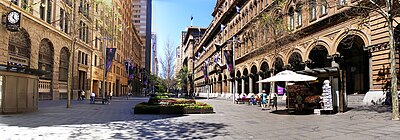
Martin Place. Sydney has a large stock of Victorian era buildings, built from the Hawkesbury sandstone on which the city lies.
See also: Buildings and architecture of Sydney and Heritage homes of Sydney
Sydney has various heritage listed buildings, including Sydney Town Hall, The Queen Victoria Building, Parliament House, and the Australian Museum.There is no architecture style that entirely characterises the whole of Sydney. Prominent styles include Gothic Revival, Georgian, Classical, Romanesque, Italianate, Federation, Edwardian, Second Empire, Queen Anne, as well as more contemporary styles. The first substantial buildings designed for Sydney were by transported convict Francis Greenway, who designed such buildings and structures as the Macquarie Lighthouse, Hyde Park Barracks, and Government House.[53]

The Rose Seidler House was Harry Seidler's first building in Australia, and is credited with inspiring the development of modernist architecture in Sydney
Harry Seidler built many modernist homes and skyscrapers in Sydney, and designed prominent buildings such as the MLC Centre, the Capita Centre, and Australia Square. Seidler's designs contrasted with the Sydney school of the 1950s and 1960s, who favoured more natural and organic designs, often hidden from view in bushland. This style of architecture often utilised natural local materials as structural elements.[55] These views were shared by Glen Murcutt, who believed that a building should blend in with its environment. Sydney has the largest skyline in Australia.[56] Current height restrictions limit future buildings to the height of 235 metres, in part due to the close proximity of Sydney Airport.
Economy
Main article: Economy of Sydney

The City of Sydney, the financial and economic hub of Australia
The Australian Securities Exchange and the Reserve Bank of Australia are located in Sydney, as are the headquarters of 90 banks and more than half of Australia's top companies, and the regional headquarters for around 500 multinational corporations.[58] Of the ten largest corporations in Australia by revenue,[59] four have headquarters in Sydney: Caltex Australia, the Commonwealth Bank, Westpac, and Woolworths. Of the 54 authorised deposit-taking banks in Australia, 44 are based in Sydney including nine of the 11 foreign subsidiary banks in Australia and all of the 29 local branches of foreign banks. Major authorised foreign banks in Sydney include Citigroup, UBS Australia, Mizuho Corporate Bank, HSBC Bank Australia and Deutsche Bank.
Shopping locations in Sydney include Pitt Street, George Street, King Street, Market Street, and Castlereagh Street, shopping complexes such as the Queen Victoria Building and Westfield Sydney, arcades such as The Strand Arcade and Mid City Centre, and department stores such as Myer and David Jones, all of which are in the shopping district in the city centre, a place to find major international brand name labels. Also in the city centre is Chinatown, which includes Paddys Markets, which is Sydney's city markets, a place for bargain hunting.
Outside the city centre there are number of other shopping destinations of interest. Inner eastern suburbs such as Potts Point, Darlinghurst and Surry Hills provide a diverse range of shops for the culturally creative and alternative lifestyle groups that live there, whilst other inner eastern areas like Paddington and Woollahra are home to boutiques selling more niche products. Inner western suburbs like Newtown and Glebe cater more towards students and alternative lifestyles. Double Bay in Sydney's harbourside eastern suburbs is un upmarket area known for its expensive boutiques. Seaside areas, including Bondi Beach in the eastern beaches area and Manly in the northern beaches area, have a retail scene based upon their beach locations, with many surfing and surfer style clothing shops.
Sydney received 7.8 million domestic visitors and 2.5 million international visitors in 2004.[61] In 2007, the (then) Premier of New South Wales, Morris Iemma established Events New South Wales to "market Sydney and NSW as a leading global events destination". Fox Studios Australia has large film studios in the city.
As of 2004, the unemployment rate in Sydney was 4.9 percent.[62] According to The Economist Intelligence Unit's Worldwide cost of living survey, Sydney is the sixteenth most expensive city in the world, while a UBS survey ranks Sydney as 15th in the world in terms of net earnings.[63] As of September 2009, Sydney has the highest median house price of any Australian capital city at $569,000, and a median unit price of $400,000.[64] Sydney also has the highest median rent prices of any Australian city at $450 a week.
The Sydney Region accounts for 12 percent (approximately $1 billion per annum) of the total agricultural production, by value, of NSW.[65] Sydney provides 55% of NSW's flower production and 58% of its turf production, as well as 44% of state's nurseries.[66] In 1994–1995 Sydney produced 44% of New South Wales' poultry meat and 48% of the state's eggs.[67]
Demographics
Main article: Demographics of Sydney
| The ten largest overseas born populations[68] | |
| Country of Birth | Population (2006) |
|---|---|
| United Kingdom | 175,166 |
| People's Republic of China | 109,142 |
| New Zealand | 81,064 |
| Vietnam | 62,144 |
| Lebanon | 54,502 |
| India | 52,975 |
| Philippines | 52,087 |
| Italy | 44,563 |
| Hong Kong | 36,866 |
| South Korea | 32,124 |
| Sydney population by year | ||
|---|---|---|
| 1800 | 3,000 | |
| 1820 | 12,000 | |
| 1851 | 39,000 | |
| 1871 | 200,000 | (Gold Rush) |
| 1901 | 500,000 | |
| 1925 | 1,000,000 | |
| 1962 | 2,000,000 | |
| 2001 | 3,366,542 | |
| 2006 | 4,119,190 | |
| 2008 | 4,399,722 | |
| 2010 | 4,504,469 | |
| 2026 | 5,487,200 | (Projected)[69] |
| 2056 | 7,649,000 | (Projected)[69] |

Friendship Arch in Cabramatta, a suburb home to a large proportion of Sydney's Vietnamese population
Most residents are native speakers of English; many have a second language, the most common being Arabic (predominately Lebanese Arabic), Chinese languages (mostly Cantonese and Mandarin), and Greek.[70] Sydney has the seventh-largest percentage of foreign-born individuals in the world.[74] Immigrants account for 75% of Sydney's annual population growth.[75]
The median age of Sydney residents is 34; 12% of the population is over 65 years old.[62] 15.2% of residents have educational attainment equal to at least a bachelor's degree,[76] In the 2006 census, 64% of the residents identified themselves as Christians, 14.1% had no religion, 10.4% left the question blank, 3.9% were Muslims, 3.7% were Buddhists, 1.7% were Hindus, 0.9% were Jewish and 0.4 were Bahai.[68]
Culture
Main article: Culture of Sydney
Sydney hosts many different festivals and some of Australia's largest social and cultural events. These include the Sydney Festival, Australia's largest arts festival which is a celebration involving both indoor and free outdoor performances throughout January; the Biennale of Sydney, established in 1973; the Big Day Out, a travelling rock-music festival which originated in Sydney; the Gay and Lesbian Mardi Gras along Oxford Street; the Sydney Film Festival and many other smaller film festivals such as the short film Tropfest and Flickerfest. Sculpture by the Sea, Australia's largest outdoor sculpture exhibit, began in Bondi Beach in 1996.Australia's premier prize for portraiture, the Archibald Prize is organised by the Art Gallery of New South Wales. The Sydney Royal Easter Show is held every year at Sydney Olympic Park, the final of Australian Idol takes place on the steps of the Opera House, and Australian Fashion Week takes place in April/May and September. Sydney's New Year's Eve and Australia Day celebrations are the largest in Australia.
A survey based on tracking the frequency of words and phrases in the media, cited Sydney as number 9 on a list of the world's top fashion cities in 2009.[77] The city is the site of the world renowned Rosemount Australian Fashion Week, which occurs biannually, and is home to many of Australia's premier fashion houses. Most international designers have a major presence in Sydney and Australia's Next Top Model is one of the most watched shows on national television.
[edit] Entertainment and performing arts
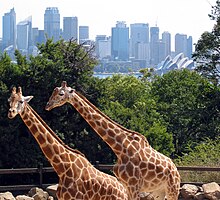
Giraffes at Sydney’s Taronga Zoo
The Sydney Conservatorium of Music is located adjacent to the Royal Botanic Gardens and serves the Australian music community through music education and biannual Australian Music Examination Board exams. The Sydney Dance Company was under the leadership of Graeme Murphy during the late 20th century. The Sydney Theatre Company has a regular roster of local plays, such as noted playwright David Williamson, classics and international playwrights.
In 2007, The New Theatre celebrated 75 years of continuous production in Sydney. Other important theatre companies in Sydney include Company B and Griffin Theatre Company. From the 1940s through to the 1970s the Sydney Push, a group of authors and political activists whose members included Germaine Greer, influenced the city's cultural life. The National Institute of Dramatic Art, based in Kensington, boasts internationally famous alumni such as Mel Gibson, Judy Davis, Baz Luhrmann and Cate Blanchett. Sydney's role in the film industry has increased since the opening of Fox Studios Australia in 1998.
Prominent films which have been filmed in the city include Moulin Rouge!, Mission: Impossible II, Star Wars episodes II and III, Superman Returns, Dark City, Son of the Mask, Stealth, Dil Chahta Hai, Happy Feet, Australia and The Matrix. Films using Sydney as a setting include Finding Nemo, Strictly Ballroom, Muriel's Wedding, Our Lips Are Sealed, and Dirty Deeds. Many Bollywood movies have also been filmed in Sydney including Singh Is Kinng, Bachna Ae Haseeno, Chak De India, Heyy Babyy. As of 2006, over 229 films have been set in, or featured Sydney.[79]
Sydney's most popular nightspots include Kings Cross, Oxford Street, Darling Harbour, Circular Quay and The Rocks, which all contain various bars, nightclubs and restaurants. Star City Casino, is Sydney's only casino and is situated around Darling Harbour. There are many traditional pubs, cafes and restaurants in inner-city areas such as Newtown, Balmain, Leichhardt and Surry Hills. Sydney's main live music hubs include areas such as Newtown and Annandale, which nurtured acts such as AC/DC, Bliss n Eso, Sparkadia, Midnight Oil and INXS. Other popular nightspots tend to be spread throughout the city in areas such as Bondi, Manly, Cronulla and Parramatta.
Tourism

Sydney Opera House with the Harbour Bridge in the background. Both are significant tourist attractions in Sydney.
Main article: Tourism in Sydney
In the year ending March 2008, Sydney received 2.7 million international visitors.[80] The most well-known attractions include the Sydney Opera House and the Sydney Harbour Bridge. Other attractions include Royal Botanical Gardens, Luna Park, some 40 beaches and Sydney Tower.[81]Sydney also has several popular museums, such as the Australian Museum (natural history and anthropology), the Powerhouse Museum (science, technology and design), the Art Gallery of New South Wales, the Museum of Contemporary Art and the Australian National Maritime Museum.[82]
Sport and outdoor activities
See also: Sport in New South Wales
Sport is an important part of Sydney's culture. The most popular sport in Sydney is rugby league. The NSWRFL (today known as the NRL) began in Sydney in the 1908 season and is the largest and most prestigious domestic rugby league competition in the Southern Hemisphere.[83] The city is home to nine of the sixteen teams currently in the National Rugby League competition: the Canterbury Bulldogs, Cronulla Sharks, Manly Sea Eagles, Penrith Panthers, Parramatta Eels, South Sydney Rabbitohs, St George Illawarra Dragons, Sydney Roosters and Wests Tigers.Cricket is the most popular summer sport in Sydney. The Ashes Series between Australia and England is widely popular among the people. As the state capital, Sydney is also the home of the NSW Blues cricket team in the Sheffield Shield cricket competition. Sydney Cricket Ground and ANZ Stadium here host cricket matches. This city has also hosted 1992 Cricket World Cup and will also host the 2015 Cricket World Cup. Sydney Cricket Ground is at present the only test venue in the city. Plans are going on to accommodate ANZ Stadium as an international cricket venue for Australia.
Sydney is the only city other than Brisbane and Melbourne to have an elite presence in the 4 major football codes of Australia – rugby league, football (soccer), rugby union and Australian rules football. Association Football is represented by Sydney FC in the A-League, whilst the second tier competitions NSWPL and NSW Super League provide many players to the A-League. Sydney also hosts major association football events of the national team, the Socceroos, most notably the World Cup Qualifier against Uruguay in 2005. Rugby Union is represented by the NSW Waratahs in the elite Southern Hemisphere Super 14 competition. The Suburban rugby competition is the Shute Shield which provides many Super 14 players. High profile Wallabies games are held in Sydney such as the Bledisloe Cup, Tri Nations matches, British and Irish Lions games, and most notably the final of the 2003 Rugby World Cup against England.
Sydney also has an Australian Football League (AFL) team called the Sydney Swans; with a second team – GWS (Greater Western Sydney) forming to enter the main AFL league in 2012, a woman's netball team (Swifts), a baseball team (Patriots), a field hockey team (Waratahs), two ice hockey teams (Penrith Bears & Sydney Ice Dogs) and a WNBL team (Sydney Uni Flames). The Sydney Kings will be re-entering the NBL competition at the end of 2010.
The NSW Blues rugby league team contests the annual Rugby League State of Origin series against the Queensland Maroons. Large sporting events such as the NRL Grand Final and Bledisloe Cup games are regularly held at the ANZ Stadium, the main stadium for the 2000 Summer Olympics.
Other events in Sydney include the start of the Sydney to Hobart Yacht Race, the Golden Slipper horse race, and the City to Surf race. Prominent sporting venues in Sydney include the Sydney Cricket Ground or SCG, ANZ Stadium, The Sydney Football Stadium, Eastern Creek Raceway, Royal Randwick and Rosehill Gardens Racecourse.
Media
Main article: Media in Sydney

ABC building in Ultimo
The three commercial television networks (Seven, Nine, Ten), as well as the government national broadcast services (ABC and SBS) are headquartered in Sydney. Also a community television station, TVS, broadcasts in the Sydney area. Historically, the networks have been based in the northern suburbs, but the last decade has seen several move to the inner city. Nine has kept its headquarters north of the harbour, in Willoughby. Ten has its studios in a redeveloped section of the inner-city suburb of Pyrmont, and Seven also has headquarters in Pyrmont, production studios at Epping as well as a purpose-built news studio in Martin Place in the CBD.
The ABC has a large headquarters and production facility in the inner-city suburb of Ultimo and SBS has its studios at Artarmon. Foxtel and Optus both supply pay-TV over their cable services to most parts of the urban area.[84][85]
The five free-to-air networks have provided digital television transmissions in Sydney since January 2000. There are also nine additional Freeview Digital Services. These include ABC2, ABC3, ABC News 24, SBS Two, 7TWO, 7mate, GO!, GEM HD, ONE HD and Eleven.
Many AM and FM government, commercial and community radio services broadcast in the Sydney area. The local ABC radio station is 702 ABC Sydney (formerly 2BL).[86] The talkback radio genre is dominated by the perennial rivals 2GB and 2UE. Popular Music radio stations include Triple M, 2Day FM and Nova 96.9, which generally target people under 40. In the older end of the music radio market, Classic Rock 95.3 and Mix 106.5 target the 25–54 age group, while WS-FM targets the 40–54 age group with their Classic Hits format mostly focusing on the 70s and 80s. Triple J (ABC), 2SER and FBi Radio provide a more independent, local and alternative sound. There are also a number of community stations broadcasting to a particular language group or local area.[87]
On 1 July 2009, DAB+ Digital Radio officially started. ABC and commercial radios provide full programing.[88]
Government
Apart from the limited role of the Cumberland County Council from 1945–1964, there has never been an overall governing body for the Sydney metropolitan area; instead, the metropolitan area is divided into local government areas (LGAs) which are comparable to boroughs in cities such as London. These areas have elected councils which are responsible for functions delegated to them by the New South Wales State Government, such as planning and garbage collection.The City of Sydney includes the central business area and some adjoining inner suburbs, and has in recent years been expanded through amalgamation with adjoining local government areas, such as South Sydney. It is led by the elected Lord Mayor of Sydney and a council. The Lord Mayor, however, is sometimes treated as a representative of the whole city, for example during the Olympics.
Most citywide government activities are controlled by the state government. These include public transport, main roads, traffic control, policing, education above preschool level, and planning of major infrastructure projects. Because a large proportion of the New South Wales population lives in Sydney, state governments have traditionally been reluctant to allow the development of citywide governmental bodies, which would tend to rival the state government. For this reason, Sydney has always been a focus for the politics of both state and federal parliaments. For example, the boundaries of the City of Sydney LGA have been significantly altered by state governments on at least four occasions since 1945, with expected advantageous effect to the governing party in the New South Wales Parliament at the time.[89]
The 38 LGAs commonly described as making up Sydney are:[90]
Education

The University of Sydney, established in 1850, is the oldest university in Australia
Main article: Education in Sydney
Sydney is home to some of Australia's most prominent educational institutions.[93] The University of Sydney, established in 1850, is Australia's oldest university and the largest in Sydney. Other public universities located in Sydney include the University of Technology, Sydney, the University of New South Wales, Macquarie University, the University of Western Sydney and the Australian Catholic University (two out of six campuses). Other universities which operate secondary campuses in Sydney include the University of Notre Dame Australia, the University of Wollongong and Curtin University of Technology.There are four multi-campus government-funded Technical and Further Education (TAFE) institutes in Sydney, which provide vocational training at a tertiary level: the Sydney Institute of Technology, Northern Sydney Institute of TAFE, Western Sydney Institute of TAFE and South Western Sydney Institute of TAFE.
Sydney has public, denominational and independent schools. Public schools, including pre-schools, primary and secondary schools, and special schools are administered by the New South Wales Department of Education and Training. There are four state-administered education areas in Sydney, that together co-ordinate 919 schools.[citation needed] Of the 30 selective high schools in the state, 25 are in Sydney.[94]
Infrastructure
Health systems
The government of New South Wales operates the public hospitals in the Sydney metropolitan region. Management of these hospitals and other specialist health facilities is coordinated by four Area Health Services: Sydney South West (SSWAHS), Sydney West (SWAHS), Northern Sydney and Central Coast (NSCCAHS) and the South Eastern Sydney and Illawarra (SESIAHS) Area Health Services. There are also a number of private hospitals in the city, many of which are aligned with religious organisations.Transport
Main article: Public transport in Sydney
Most Sydney residents travel by car through the system of roads and motorways. The most important trunk routes in the urban area are the nine Metroads, which include the 110 km (68 mi) Sydney Orbital Network. Sydney is also served by train, taxi, bus and ferry networks.Trains in Sydney are run by CityRail, a state-run corporation. Trains run as suburban commuter rail services in the outer suburbs, then converge in an underground city loop service in the central business district. In the years following the 2000 Olympics, CityRail's performance declined significantly.[95] In 2005, CityRail introduced a revised timetable and employed more drivers.[96] A large infrastructure project, the Clearways project, is scheduled to be completed by 2010.[97][98][99] In 2007 a report found Cityrail performed poorly compared to many metro services from other world cities.[100]
Sydney has one privately operated light rail line, Metro Light Rail, running from Central Station to Lilyfield along a former goods train line. The Metro Monorail runs in a loop around the main shopping district and Darling Harbour. Sydney was once served by an extensive tram network, which was progressively closed in the 1950s and 1960s.[101]
Most parts of the metropolitan area are served by buses, many of which follow the pre-1961 tram routes. In the city and inner suburbs the state-owned Sydney Buses has a monopoly. In the outer suburbs, service is contracted to many private bus companies. Construction of a network of rapid bus transitways in areas not previously well served by public transport began in 1999, and the first of these, the Liverpool–Parramatta Rapid Bus Transitway, opened in February 2003. State government-owned Sydney Ferries runs numerous commuter and tourist ferry services on Sydney Harbour and the Parramatta River.[102]

Domestic Terminal at Sydney Airport
The question of the need for a Second Sydney Airport has raised much controversy. A 2003 study found that Sydney Airport can manage as Sydney's sole international airport for 20 years, with a significant increase in airport traffic predicted.[104] The resulting expansion of the airport would have a substantial impact on the community, including additional aircraft noise affecting residents. Land has been acquired at Badgerys Creek for a second airport, the site acting as a focal point of political argument.[105]
Utilities
Water storage and supply for Sydney is managed by the Sydney Catchment Authority, which is an agency of the NSW Government that sells bulk water to Sydney Water and other agencies. Water in the Sydney catchment is chiefly stored in dams in the Upper Nepean Scheme, the Blue Mountains, Woronora Dam, Warragamba Dam and the Shoalhaven Scheme.[106] Historically low water levels in the catchment have led to water use restrictions and the NSW government is investigating alternative water supply options, including grey water recycling and the construction of a seawater reverse osmosis desalination plant at Kurnell.[107] As of May 2009, the plant was 80% completed, and was due to start supplying fresh water to Sydney at the end of the year.[108] In late January 2010, the NSW government announced that desalination plant was operating and people in different regions were being supplied with desalinated water. There were no complaints or reports about water odour, which people had previously perceived was going to be present.[citation needed] Sydney Water also collects the wastewater and sewage produced by the city.Four companies supply natural gas and electricity to Sydney: Energy Australia, AGL, Integral Energy and Origin Energy. The natural gas supply for the city is sourced from the Cooper Basin in South Australia. Numerous telecommunications companies operate in Sydney providing terrestrial and mobile telecommunications services.




 12:40 AM
12:40 AM
 SHAFQAT HUSSAUN
, Posted in
SHAFQAT HUSSAUN
, Posted in

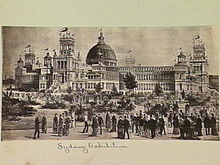
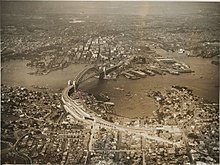







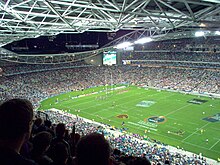

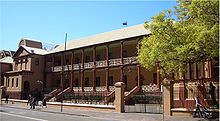


0 Response to "Sydney"
Post a Comment